The 6 Stages of Play & How They Contribute to Development
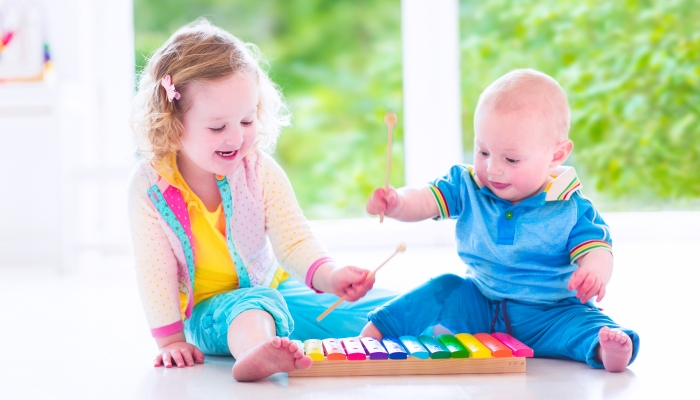
- Play has many benefits for children, from processing daily events to learning emotional regulation.
- Free play and structured play are both important in early childhood development.
- Children typically go through six stages of play.
- Promoting healthy playtime is an easy way to nurture your child’s development.
“Will you play with me?” My son met me at the door, truck in hand, an eager smile blossoming on his rosy cheeks. Fresh from a long day at work, I wanted nothing more than a shower and dinner.
I opened my mouth to say, “Not right now, buddy,” when I remembered what I had read recently about the importance of play in child development. My own smile blossomed on my cheeks. “Sure! Let me wash my hands and I’ll meet you in the living room.”
When children play, they’re also learning about the world around them. Your child will go through different stages of play, and each one is an important part of their development.
So, how does play contribute to your child’s development, and how does adult participation affect their learning?
Benefits of Play Child Development
Play is a child’s work and one of the primary ways they engage with the world on their terms. All of a child’s physical senses are engaged when they play. Children learn so much from this experience.
Added benefits of play include practicing social skills like sharing and the beginning steps of learning emotional regulation. While play can feel unnecessary to adults, it is vital for children of every age to process daily events and make meaning of their world.
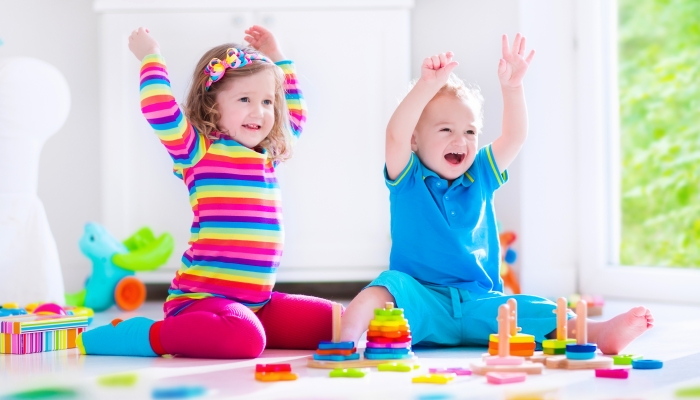
Types of Play
There are two main categories of play in which children can engage: free play and structured play.
Free play, or unstructured play, is where children are in control and play however they prefer. Think of a young child on a playground; there are a variety of things with which to play and no set way of how to use the equipment.
Structured or goal-oriented play, on the other hand, is where an activity or toy is chosen, and logic is used to accomplish a problem or task. Board games and puzzles are activities many children enjoy that can be described as structured play opportunities. These can be done with a favorite adult or another child.
Ideally, a child should have abundant opportunities every day to engage in both types of play.
Free play is fluid, open-ended, lets children practice social skills, and encourages self-expression and imagination. Structured play allows for opportunities to practice taking turns, establishes clear boundaries, and develops decision-making skills. Both are necessary in early childhood development.
What are the Stages of Play?
Researcher and sociologist Dr. Mildren Parten Newhall describes 6 stages of play through which children progress as they grow. Remember that each child develops at their own pace and that children of the same age may not play in the same ways.
Unoccupied Play: 0–3 Months
Very young children begin to engage in unoccupied play when they are simply observing or making random movements. Think of an awake newborn laying on a blanket and moving their arms, legs, feet, or head. These children are learning what it feels like to move their body in the world around them.
Solitary Play: 0–2 Years
Solitary play is distinctive because the child is playing by themselves and is not aware of others that may be playing around them. Children engaging in solitary play are maintaining focus on their own activity. Consider a child of this age playing with a ball or stuffed animal while another sibling plays with their own toys in a different part of the same room.
Onlooker Play: 2 Years
Your child watches other children play and isn’t interacting with them. This is not the same as being shy—a child in this stage is standing back, usually within eyesight and earshot of the other children playing, and taking it all in. The purpose of this play is to watch and learn from others. Your child will then experiment with the same or similar type of play when they’re ready.
Parallel Play: 2+ Years
This type of play is what many people first think of when they imagine toddlers playing. In parallel play, two children sit very near each other, each focused on their own activity, and neither child’s play impacts the other. If you’re thinking this stage sounds much like solitary play, that’s true. The difference is that parallel play involves multiple children close to each other, each doing their own activity. Solitary players are alone in their own area.
Associative Play: 3–4 Years
Known as the first stage of social interaction, preschoolers in this stage are beginning to focus on other people playing and not only their own work. However, they aren’t focused on a common goal. They might share toys but they are not playing together to achieve an end point.
Cooperative Play: 4+ Years
The last and most advanced of the six stages, cooperative play is marked by children playing together with shared goals. There will be rules about how to play, possibly assigned roles, problem solving, and lots of negotiation as they work to play “house” or build a fort.
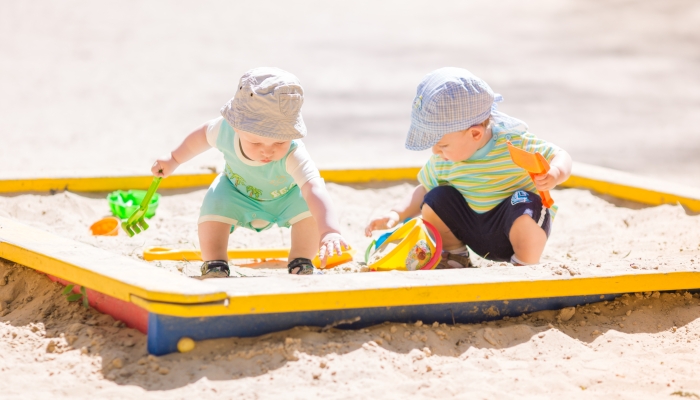
Tips to Help Promote Healthy Playtime in Children
Promoting healthy playtime at home is a great way to have fun and support your child’s development. There are plenty of easy ways to support your children’s play and have fun together!
Choosing the Right Toys
Generally speaking, a child’s play is simple, uncomplicated, and open-ended. Have you ever given a large gift to a young child, only to find that they’re as entranced with the box as they are with the gift? Children of all ages are remarkably adept at being creative with whatever materials they have at hand and inventing new ways to play with the same toys.
That being said, depending on the current stage of play of your child, different types of toys may provide different levels of enjoyment. For example:
- Babies and young children in the unoccupied and solitary play stages tend to prefer black and white toys. The high-contrast pattern captures their attention and helps them to focus.
- Toddlers, such as those in the onlooker and parallel play stages, tend to favor toys like crawling tunnels that help them explore their environment.
- The options are endless for preschool children in the associative and cooperative play stages. Anything that inspires creativity, such as finger painting, pretend play, and dressing up in costumes, tends to be a favorite.
Seek opportunities to play with other children. It’ll give your child a chance to practice their play development and language skills, be creative with new toys, and maybe lead to new friendships for you!
Avoid Screens
Research from the American Academy of Pediatrics (AAP) and UNICEF indicates that screens, with the exception of video chats with families, are not recommended for children under the age of 18 to 24 months.
Children in every stage of play do best when provided with human interaction. Skills such as empathy and interpretation of non-verbal skills are not taught consistently through digital media.
One of the issues surrounding screen use in younger children is the use of screens by the adults in their lives. When your child shows interest and invites you to play, set aside your screen and make a commitment to be fully present while you are playing with them.
Even as few as 30 minutes a day of focused attention and interaction from their favorite adults can do wonders for children in all stages of play.
Have Fun with Music
An abundance of research supports the many benefits of music and musical play in childhood development. Musical play need not be complex to be beneficial.
- Simple musical games, such as “Patty Cake” or “The Itsy Bitsy Spider” with children in the unoccupied and solitary play stages, may accelerate communication skills and help your baby master complex language concepts faster.
- Music for children in the onlooker and parallel play stages can improve hand-eye coordination, enhance movement of both sides of the body, and improve fine motor skills—all important skills in a toddler’s development. Musical exposure for these children can be as formal as parent-child music programs, such as Kindermusik, or singing nursery rhymes together in your kitchen as you drum on pots and pans.
- Older children, such as those in the associative and cooperative play stages, also benefit from musical play. Their natural love of music boosts language and cognitive skills, encourages social participation through large-group music making, and enhances social and emotional skills. Allow your child to create their own instruments using objects you may have in your house (pots, pans, boxes, or rubber bands) or seek out music making opportunities for preschoolers in your community.
Play of all kinds is a gift to children and parents alike. With a variety of cognitive, social, emotional, and developmental benefits, play is indeed work that will keep your child busy for years to come. Without question, it is work that children of all ages love to do. Join your child for play and watch their future unfold!
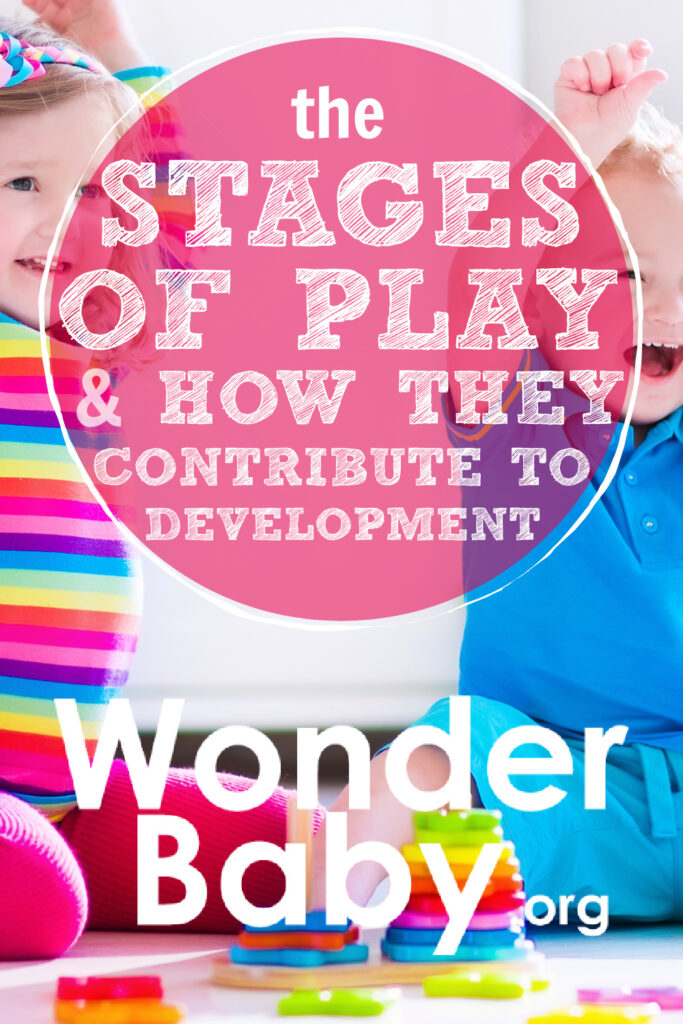
The information WonderBaby provides is not intended to be, and does not constitute, medical or other health advice or diagnosis and should not be used as such. Always consult with a qualified medical professional about your specific circumstances.
Related Posts
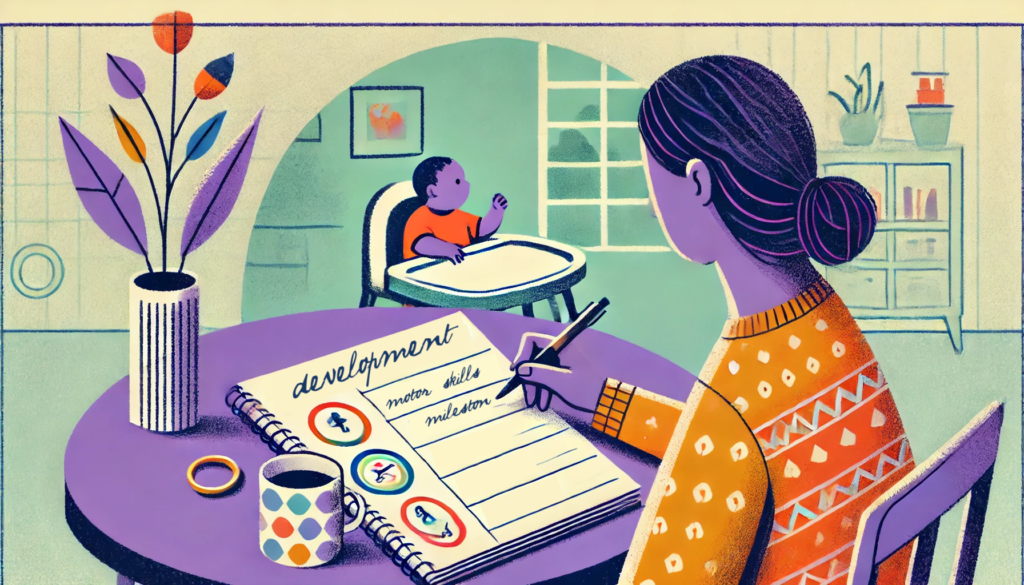
Development, Special Needs
How to Track Milestones for Developmentally Delayed Babies
Parents of developmentally delayed babies can explore practical tools and strategies to track milestones, celebrate progress, and support their child’s unique developmental journey.

Fine and Gross Motor
5 Alternatives to Tummy Time for Babies with Motor Development Challenges
Does your baby struggle with tummy time due to motor development challenges? These alternatives to tummy time will offer the same benefits.

Development
Should Twins Share a Room?
Wondering if your twins should share a room? We’ll explore the pros and cons of room-sharing for twins right here before you make your decision.